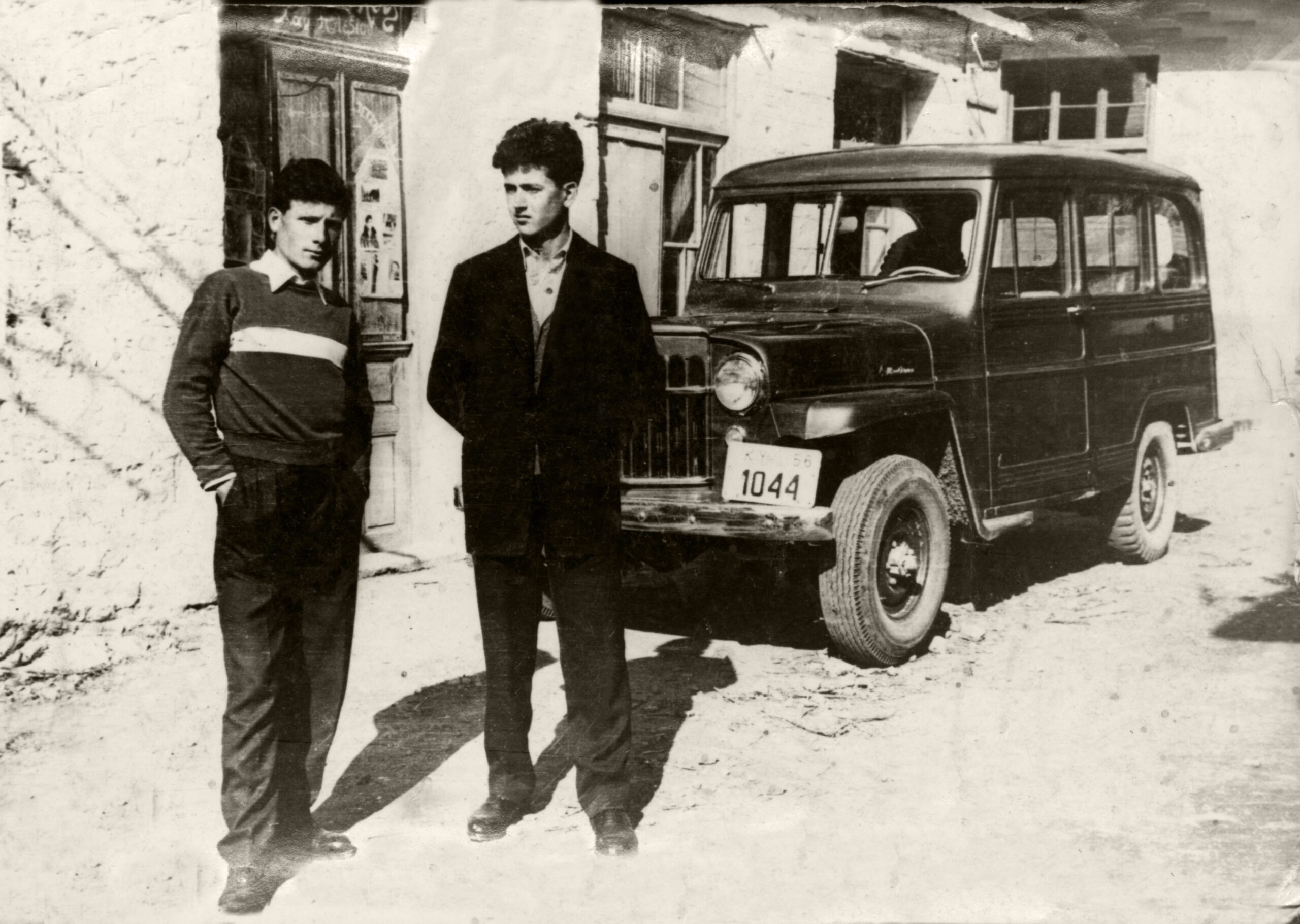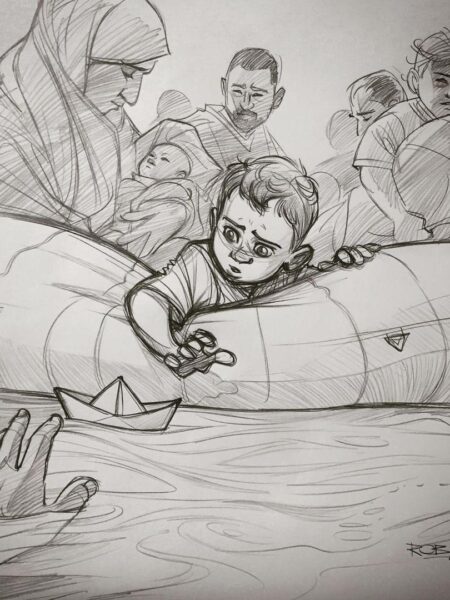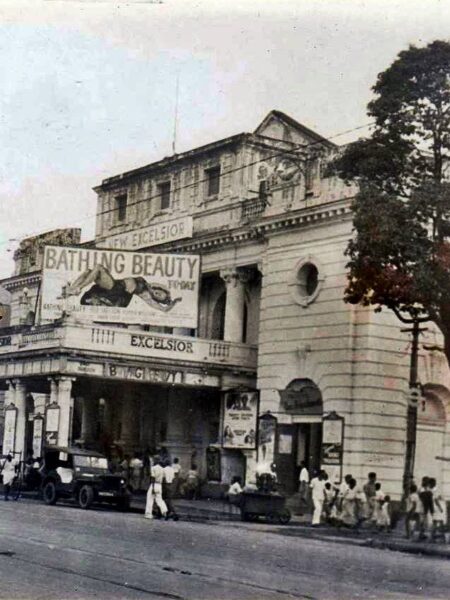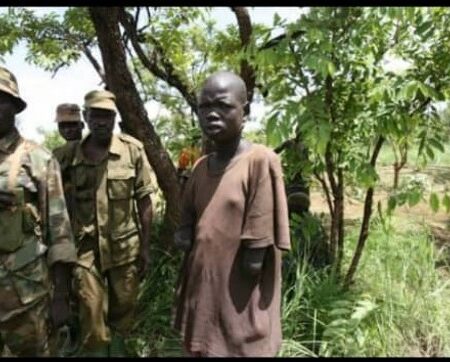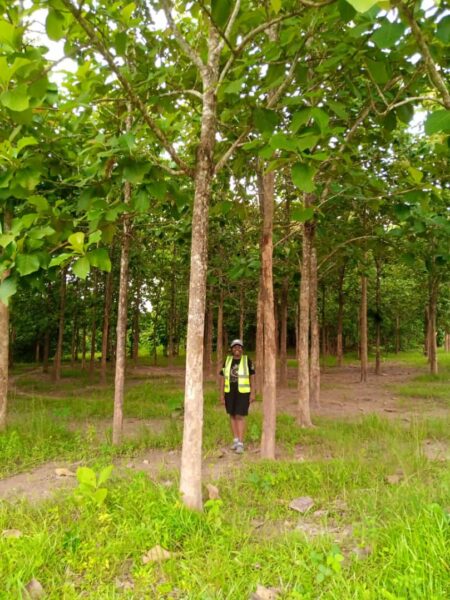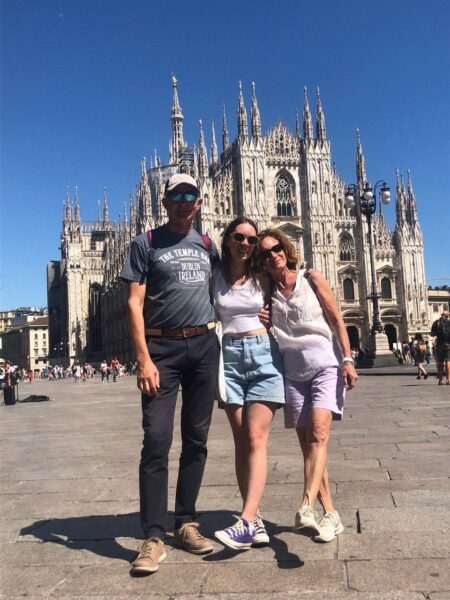Introduction
It was a calm August afternoon. The prolonged heat wave had dried up the landscape and the sea was calm. On August 3, 2021, starting with a spark in the village of Rovies in northwestern Euboea, the largest wildfire Greece has ever faced 1 broke out. From 3 to 13 August, local communities battled the flames to save their properties.
Starting on a western coast, the fire burned more than 50,000 acres 2 and spread in the northern and eastern part of the island. At the same time, the civil protection insisted on evacuating the settlements and transferring residents to the sea for safety. But many people disobeyed the orders and stayed in their homes to save their villages. Residents fought constant battles to control not only the rapid spread of the fire but also the constant rekindling.
Even if there was no loss of life, the ecological disaster deeply affected the local population. The wider community was confronted with a collective trauma that had profound structural and social consequences 3. The nature of the community’s trauma pushed it violently into the need for reconstruction.
Many agricultural jobs that relied on the forest disappeared and tourism was seriously affected 4. In addition, more than 1000 houses 5 were damaged or burnt to the ground. Considering that the two municipalities of North Euboea affected by the fire (Municipality of Istiaia and Municipality of Mantoudi) cover a total of 108,500 acres, we understand the magnitude of the disaster. Almost 70% of the territory of the municipalities was incinerated.

Two years after the natural disaster that shocked Greece and made headlines worldwide6 it is time to shine a light on the lives of residents who continue struggling to get on their feet again and rebuild their communities. The aim of this paper is not to chase the drama, but by using oral history, to examine how the fire affected the bonds of the local community. Was the fire a decisive factor of change or did everything return to its previous state?
My assessment is that the fire has seriously upset the balance of local communities. Undoubtedly a typical relationship between residents may have taken a complete turn in the face of danger. The existence of a collective threat would have united people. However, I believe that with the passage of immediate danger, living conditions would calm down and community bonds would have been loosened anew. In general, I believe that although the rallying of the days of the disaster could not be kept clean, it gradually turned into a now institutionalized social mobilization. That is, the gathered communities will not disband but will re-form collectives and other groups for the new challenges created by the fire.
To answer my question I visited Northern Euboea and talked to people in the area. In total, I conducted four interviews with people from neighboring villages. Konstantina, Giorgos, Maria and Nikos were particularly willing to share their experience with me. My interviewees are permanent residents of the municipality of Istiaiaia Edipsos and range in age from 25 to 47 years old. They live and are economically active in the area and are members of local cultural associations.
1. Before the disaster.
Taking its name from Homer, Euboea is a Greek island with considerable cultivable lands and forest areas. Consisting mainly of villages, the island is home to many small communities that are in constant cooperation. What Northern Euboea never lacks, especially during the holidays and summer season, are various festivals and events organized by local associations. The local municipalities are also very active and their actions promote contact and cooperation between different local communities. In general, life on the island before the events of the summer of 2021 was calm, people were active in various ways in the area and tensions were absent.
The main economic activity of the island is agriculture and tourism. However, despite the high significance of the land for the local community, private and municipal initiatives to care for the forest seemed to be lacking. Giorgos, a fishmonger and farmer, stated: ‘The forest was not ready, there were no anti-fire structures. Normally firebreaks should have been constructed and every year the forestry department should have overseen the cleanup of both the forest and private property. There were so many dried weeds and the vegetation was so dense that the fire gained tremendous power.’

However, the familiarity of the population with the forest and its morphology was not enough to prevent the destruction. The summer of 2021 set European temperature records, drying out the landscape and causing a series of catastrophic weather events. The prolonged high temperatures and the absence of rain favored the spread of fires across the country. The same weather pattern was followed in Euboea.
The fire at Rovies caught most residents off guard. Small fire incidents took place almost every summer, but were dealt with within hours by local firefighters. An incident of this magnitude, with most of the northern part of the island engulfed in flames, seemed something beyond imagination. Konstantina noted: ‘Before the fires, no one expected that a disaster of this magnitude could occur. Unless you have visited the place you cannot understand the extent of the destruction. It started in a village on the other side of the island, burned for ten full days and finally reached our village.’
2. Battling with flames.
The inability of the state mechanism to contain the flames led the fire to the northern part of the island. Gradually, one by one, the villages were called by the civil protection services for evacuation. Residents were moved to coastal areas for greater safety, with some staying behind to try to save homes and property. Konstantina, whose village was the last to face the fire, remained at home with her family: “We hadn’t slept for over four days. State orders insisted on evacuation around 72 hours before the fire reached our homes. The police would come by with loudspeakers and call for evacuation. Church bells were ringing. We were hiding so we wouldn’t leave. We knew that if we gave up we wouldn’t find anything when we came back.”
In the area, according to my interviewees, the Greek fire brigade forces could only intervene when a house or a person was in danger, minimizing state capacity to extinguish the fire in the forest. At the same time, the outbreak of two other fires elsewhere, in Attica and Ancient Olympia, were absorbing the aerial firefighting forces, leaving Euboea without aerial drops.
Firefighting assistance sent by the European Union 7 and other countries was instrumental in containing the fire. “The Greek firefighters could not intervene in the forest, they did not know the terrain. When the Ukrainians and other European firefighters came, they immediately started to study the situation and plan their action. They had tremendous equipment, they helped us a lot,” says Maria, who was closely following the course of the fire as her house was at the beginning of the settlement, close to the burning forest.

However, all these days the initiative of the local residents was serious. They organized themselves with personal equipment in order to limit the spread of the fire as much as they could and drive it off the settlements. Giorgos, who was at work when he was informed of the spread of the fire and ran for help, notes: “We created a strong residents’ initiative that was found instrumental in saving a lot of houses and controlling the fire. We had collected big tanks of water and poured from there as the water supply system had failed and the village had run out of water. We were all gathered together, most of us were young men since the elderly had moved to the beach for safety. We knew the game was lost as no one could control a fire with the power it had gained so we tried to at least save villages and houses. Panic was pervasive everywhere but it did not overwhelm us because we were all fighting together at that moment to save as much as we could.”

The disobedience of the residents to evacuate and the battle fought by the rallied residents was crucial in controlling the hermetic fire. The residents were not just fighting for their homes but for the forest that was the source of life for all local communities. Woodcutters and farmers, that are familiar with working in nature, used their skills to help in those critical hours. “From the very first moment we got organized. All of us are involved with the land. We all took the equipment we had and created a plan of where to go. We were all one big team in those days,” says Nikos.
From all available testimonies, we can easily conclude that during the days of the fire there was an explosion of solidarity in Euboea. The communities’ familiarity with nature helped them to move quickly and often predict the course of the fire, saving many settlements.Local communities came together as never before creating a remarkable blossoming of collectivity that was decisive in controlling the fire and avoiding greater disasters.
3. Collecting the pieces.
Gradually, after the danger had passed, the inhabitants returned to their homes. However, now the most difficult and lengthy problem was about to begin: the reconstruction. Konstantina, whose house has gone through small external damages, noted: ‘In the following days, things did not calm down since there were constant flare-ups. We were all numb. We couldn’t realize what had just happened. No house had been totally lost in our village but everyone more or less had things to repair.’
Even from the first investigations in the area about the effects of the fire, the focus was on the irreparable damage to the natural environment. The view of E. Lekkas, professor of Dynamic Tectonic Applies Geology and Disaster Management at the University of Athens, is quite interesting. The professor noted that from the first visit to the burnt landscape one could see that landslides and floods were likely to occur. In addition, he observed that the nature of the disaster will not allow 35,000 acres of burnt vegetation to ever return to their previous state 8.

The large volume of first aid products that had arrived from all over Greece led to the creation of distribution teams in every village. However, there were many complaints against individuals who abused the situation and took advantage of the disaster to benefit themselves. “When we distributed the goods we tried to do it equally in terms of quantity and quality but still there were people complaining about a packet of rice.Τhere were those who only looked at their own benefit.” says Maria, who was involved in these teams. For a long time help was constantly coming in. Many people and organizations would send various goods such as food, clothes, even seeds to replant the damaged gardens.
Nonetheless, the initial rallying of solidarity slowly died out. At some point the problem began to be forgotten. A few days after the start of the fire, the Greek Prime Minister, Kyriakos Mitsotakis, announced in a press release the financial support of 500 million euros for the affected 9. “Pain was clearly still there but we had to come to terms with the new reality. The situation took a 180-degree turn when the compensation payments came. Since we were now dealing with money, the team spirit I was talking about earlier was lost: Everyone did everything to get as much as possible,” according to Konstantina.

Apart from the immediate financial support, the government also proceeded to promulgate relief measures for the residents of the two affected municipalities, such as exemption from ENFIA10 . This tax relief, combined with additional subsidies, significantly helped the residents of the areas to gain a certain financial stability after the disaster. “It was a great relief for us that we didn’t have to pay taxes. After all, we couldn’t find the money to pay them back. For a long time we had stopped working. In August tourism was dead for the summer of 2021, leaving a lot of people out of work. Most of the olives had burned, the pine trees that we used to extract honey and resin were completely gone,” Giorgos states.
4. Two years later.
Two years after the disaster, life seems to have returned to its former rhythm but with significant financial difficulties remaining. The burnt trees and bare hills are still there to remind us of the tragic events of August 2021. However, hope does not seem to be lost and people are putting effort and love to rebuild their land. “Fire has remade us all. We were born again from the ashes. It was a significant trauma and certainly brought to light other social problems. We had to start from scratch but we are all motivated by life and that is how we move forward.” says Maria.
Even after the fire and despite the subsequent vulnerability of the area to floods and other natural phenomena, there were few incidents of migration. The so-called “Attachment to place” 11 , a phenomenon observed in natural disaster victims who returned to their homes despite the damage, was also found in this case . “There was no way we could leave, we knew we would find a way to get back on our feet” says Maria, while Κonstantina’s observation is also interesting:”We never thought of leaving. We had nowhere to go. It’s not easy to leave your home and the effort of a lifetime.”
In the economic sector,the region is still in need of support. With the fire, many agricultural jobs that relied on the forest have been lost and tourism was also significantly affected. Tax exemptions continue to be implemented and the government is providing additional support measures to local businesses by boosting agricultural production and tourism. At the same time, group initiatives are undertaking a series of actions to regenerate the area. A typical example is the ‘Εύβοια Μετά'(Euboea Meta) 12 group, which has planned 127 projects for the restoration of the area.

Several of the volunteer firefighters, most of whom were working in the forest, did not stop their actions. In place of the groups they formed in the days of the fire, there are now autonomous groups of private individuals who continue to act, protecting land that was saved and taking care of the burnt land. Thus we can see that the spirit of cooperation has not been lost but rather translated into new actions to regenerate the place.
The residents declared themselves ready to fight, as a report in the newspaper “Kathimerini ” 13 vividly portrayed in an article, one year after the disaster. With the help of private individuals and organizations, the residents are ready to work again to rebuild the place they love so much.
At the same time, cultural institutions such as the Thessaloniki International Film Festival are organizing festivals in the major cities of the two affected municipalities. Local initiative is also important as feasts, concerts and festivals continue to be held throughout the region while the municipalities maintain their established festive traditions.

It seems that the fire and the explosion of rallying gave the people of North Euboea the understanding of the importance of collective action. The traumatized communities did not split after the terrible events but translated this rallying into a new collective action. Local associations and community initiatives grew and increased their actions. From Folk dance clubs to organizing festivals, local communities systematically organize and advertise their place for tourism. “We have many cultural associations and parent associations. After the fires we have not stopped organizing events. We didn’t want to stop celebrating. It is an opportunity to have a good time and to advertise our place. We know that an event that has a large audience will also boost local businesses,” Nikos stressed.
In general, the pain and trauma continues to exist, but the residents are fighting for a new beginning. The disaster may have been immense and deeply affected all areas of human life, but the will to live and regenerate is motivating people to try. The local communities of North Euboea that were plunged into ashes in August 2021 seem to be reborn. The trauma is surely not forgotten, but rather used as motivation for a new bright start.
Conclusion.
The fire in Euboea was such a devastating event that it severely affected local communities and violently disrupted ordinary life. The photographs of the days of the fire, the desperation and voices of the residents pleading for help made headlines all over the world. In the days of the fire, residents showed their humanitarianism, solidarity and generosity, creating strong chains of rallying against the common threat. The communities of Northern Euboea have been regenerated, empowered and are now fighting for the regeneration of their place
The following day the financial compensation mitigated the residents’ anger against the authorities and helped the first steps towards recovery. Along with the problems that emerged from the disaster, there were revealed social problems deeply rooted in human nature: Man often deceives his neighbor in order to benefit himself. I would not like to concentrate on the few incidents of deception observed in the days of the financial reparations. What I have seen by talking to people in Euboea and living in this place is the great will and love for life. Two years after this unprecedented disaster that has marked the lives of all the inhabitants, people are trying to rebuild what was lost.
The wildfires were not just a problem that was resolved, but a social frontier, a transition point for the life of local communities. This collective trauma strengthened social bonds and emphasized the importance of belonging. In the same collective way that they faced the danger, it seems that the inhabitants of Northern Euboea are constantly healing wounds. In 2023 the communities of Euboea are still fighting to reclaim what they have lost. The problems are still innumerable. However, with everyone’s help and a strong desire for regeneration, they are overcoming them.The spirit that emerged in the communities in the days of the fire has now been translated into local collectives. The clubs, organizations, and group initiatives of residents to embellish and restore the place reflect this change that the fire brought to the bonds of local communities.
My initial hypothesis of partial maintenance of the clustering seems to be confirmed. Clearly the spirit of cooperation could not be maintained intact. However, the new challenges generated by the fire have brought to the surface cultural and environmental collectives battling to address them. But my view is that North Euboea can support other initiatives for the effective recovery of the place. By recovery I do not just mean a return to normality. The aim should be to upgrade and properly exploit the multiple resources that the place provides. From innovative agrotourism, reforestation programs, cultural events, North Euboea can be reborn from the ashes and become a serious attraction for tourists and new residents. However, to achieve this, private initiative will not be enough, it will require the practical help of everyone
.
Sources.
Maria Athanasiou“Οδοιπορικό Στη Βόρεια Εύβοια: Η Νέα Αρχή, Μετά Την Μεγάλη Καταστροφή.” [Journey to North Euboea: The New
Beginning, After the Great Catastrophe] Kathimerini, July 16,2022.(Last accessed 11.06.2023) https://www.kathimerini.gr/k/k-magazine/561951007/odoiporiko-stin-voreia-%20eyvoia-i-nea-archi-meta-tin-megali-katastrofi/
Vasilis Dalianis,”Φωτιές:Η ευρωπαϊκή και διεθνής βοήθεια προς την Ελλάδα” [Wildfires:The European and international aid to Greece], Protothema, August 10, 2021. (Last accessed 09.06.2023) https://www.protothema.gr/greece/article/1150976/foties-i-europaiki-kai-diethnis-voitheia-pros-tin-ellada/
IN editorial team “Φωτιά στην Εύβοια – Τεράστια οικονομική καταστροφή – Σε απόγνωση οι επιχειρηματίες” [Fire in Euboea – Huge economic disaster – The businessmen in desperation], in.gr, August 15, 2021. (Last accessed 25.06.2023) https://www.in.gr/2021/08/15/in-tv/fotia-stin-eyvoia-terastia-oikonomiki-katastrofi-se-apognosi-oi-epixeirimaties/
Philip Kennicott, “The photos of Greece on fire are shocking. But shock doesn’t always lead to change.”, The Washington Post, August 10,2021. (Last accessed 11.06.2023)https://www.washingtonpost.com/entertainment/greece-fire-woman-photo-climate-change/2021/08/09/19bbdbe8-f943-11eb-9c0e-97e29906a970_story.html
Newsroom, “Φωτιά Εύβοια – Λέκκας: Μόνο 150.000 στρέμματα από τα 500.000 που κάηκαν μπορούν να αναδασωθούν” [Fire Euboea -Lekkas: Only 15,000 acres of the 50,000 that burned can be reforested] CNN, August 10, 2021. (Last accessed 12.06.2023) https://www.cnn.gr/ellada/story/277462/fotia-eyvoia-lekkas-mono-150-000-stremmata-apo-ta-500-000-poy-kaikan-mporoyn-na-anadasothoyn
E. Rohland, M. Böcker, G. Cullmann, I. Haltermann, and F. Mauelshagen, “Woven Together”, in M. Cave and S. M. Sloan,(ed.) Listening on the edge. Oxford: Oxford University Press, 2009-10, pp. 183-206.
TANEA Team, “Φωτιά στην Ευβοια- Η πιο καταστροφική φωτιά όλων των εποχών στην Ελλάδα” [Fire in Euboea- The most destructive fire ever in Greece], Ta Nea, August 11, 2021. https://www.tanea.gr/2021/08/11/greece/fotia-stin-eyvoia-i-megalyteri-katastrofi-olon-ton-epoxon/
The editorial team of ertnews.gr “Β. Εύβοια: Η αποτύπωση της καταστροφής από δορυφόρο – 510.000 τα καμένα στρέμματα” [Β.Evia: A satellite image of the disaster – 51,000 acres burnt], ErtNews, August 12,2021. (last accessed 11.06.2023)https://www.ertnews.gr/eidiseis/ellada/eyvoia-i-apotyposi-tis-katastrofis-apo-doryforo/
The LiFO team, “Εύβοια – Αντιδήμαρχος Μαντουδίου: «1.000 καμένα σπίτια μόνο στο δήμο μας” [Euboea – Deputy Mayor ofMantoudi: "1,000 burned houses in our municipality alone"], LiFO, August 9, 2021. (Last accessed 10.06.2023) https://www.lifo.gr/now/greece/fotia-stin-eyboia-antidimarhos-mantoydioy-1000-ta-kamena-spitia-mono-sto-dimo-mas
The LiFO team “Μητσοτάκης: Θα ξαναχτίσουμε την β. Εύβοια ομορφότερη – Οι πρώτες εκταμιεύσεις εντός των επόμενων ημερών” [Mitsotakis: We will rebuild the b. Euboea more beautiful -The first disbursements within the next few days.] LiFO, August 18, 2021. (Last accessed 12.06.2023) https://www.lifo.gr/now/politics/mitsotakis-tha-xanahtisoyme-tin-boreia-eyboia-kalyteri-kai-omorfoteri-apo-ayto-opoio
- TANEA Team, “Φωτιά στην Ευβοια- Η πιο καταστροφική φωτιά όλων των εποχών
στην Ελλάδα” ,Ta Nea, August 11, 2021. (last accessed 11.06,2023). https://www.tanea.gr/2021/08/11/greece/fotia-stin-eyvoia-i-megalyteri-katastrofi-olon-ton-epoxon/. ↩ - The editorial team of ertnews.gr “Β. Εύβοια: Η αποτύπωση της καταστροφής
από δορυφόρο – 510.000 τα καμένα στρέμματα” , ErtNews, August 12, 2021. (Last accessed 11.06.2023). https://www.ertnews.gr/eidiseis/ellada/eyvoia-i-apotyposi-tis-katastrofis-apo-doryforo/. ↩ - Weisner, L. , “Individual and community trauma: Individual experiences in
collective environments.” Illinois Criminal Justice Information Authority.
(2020) (Last accessed 11.06.2023). ↩ - IN editorial team “Φωτιά στην Εύβοια – Τεράστια οικονομική καταστροφή – Σε απόγνωση οι επιχειρηματίες”, in.gr August 15, 2021. (Last accessed 25.06.2023).https://www.in.gr/2021/08/15/in-tv/fotia-stin-eyvoia-terastia-oikonomiki-katastrofi-se-apognosi-oi-epixeirimaties/. ↩
- The LiFO team, “Εύβοια – Αντιδήμαρχος Μαντουδίου: «1.000 καμένα σπίτια
μόνο στο δήμο μας” , LiFO, August 9, 2021. (Last accessed 10.06.2023) https://www.lifo.gr/now/greece/fotia-stin-eyboia-antidimarhos-
mantoydioy-1000-ta-kamena-spitia-mono-sto-dimo-mas. ↩ - Philip Kennicott, “The photos of Greece on fire are shocking. But shock doesn’t always lead to change.”, The Washington Post, August 10,2021. (Last
accessed 11.06.2023) https://www.washingtonpost.com/entertainment/greece-fire-woman-photo-climate-change/2021/08/09/19bbdbe8-f943-11eb-9c0e-97e29906a970_story.html. ↩ - Vasilis Dalianis,”Φωτιές:Η ευρωπαϊκή και διεθνής βοήθεια προς την Ελλάδα” , Protothema, August 10, 2021. (Last accessed 09.06.2023) https://www.protothema.gr/greece/article/1150976/foties-i-europaiki-kai-diethnis-voitheia-pros-tin-ellada/. ↩
- Newsroom, “Φωτιά Εύβοια – Λέκκας: Μόνο 150.000 στρέμματα από τα 500.000
που κάηκαν μπορούν να αναδασωθούν” CNN, August 10, 2021. (Last accessed 12.06.2023) https://www.cnn.gr/ellada/story/277462/fotia-
eyvoia-lekkas-mono-150-000-stremmata-apo-ta-500-000-poy-kaikan-mporoyn-na-anadasothoyn. ↩ - The LiFO team “Μητσοτάκης: Θα ξαναχτίσουμε την β. Εύβοια ομορφότερη – Οι πρώτες εκταμιεύσεις εντός των επόμενων ημερών” LiFO, August 18, 2021. (Last accessed 12.06.2023) https://www.lifo.gr/now/politics/mitsotakis-tha-xanahtisoyme-tin-boreia-eyboia-kalyteri-kai-omorfoteri-apo-ayto-opoio areas. ↩
- The Unified Property Tax is a real estate tax imposed by the Greek state. ↩
- Rohland, E., Böcker, M., Cullmann, G., Haltermann, I. and Mauelshagen, F.
“Woven Together”, in M. Cave and S. M. Sloan, (ed.) Listening on the edge. Oxford:
Oxford University Press, 2009-10, pp. 183-206. ↩ - https://evoia-meta.gov.gr/. ↩
- Maria Athanasiou, “Οδοιπορικό στη Βόρεια
Εύβοοια: Η νέα αρχή, μετά την μεγάλη καταστροφή”, Kathimerini July 16, 2022. (Last accessed 11.06.2023)
https://www.kathimerini.gr/k/k-magazine/561951007/odoiporiko-stin-voreia-%20eyvoia-i-nea-archi-meta-tin-megali-katastrofi/. ↩

